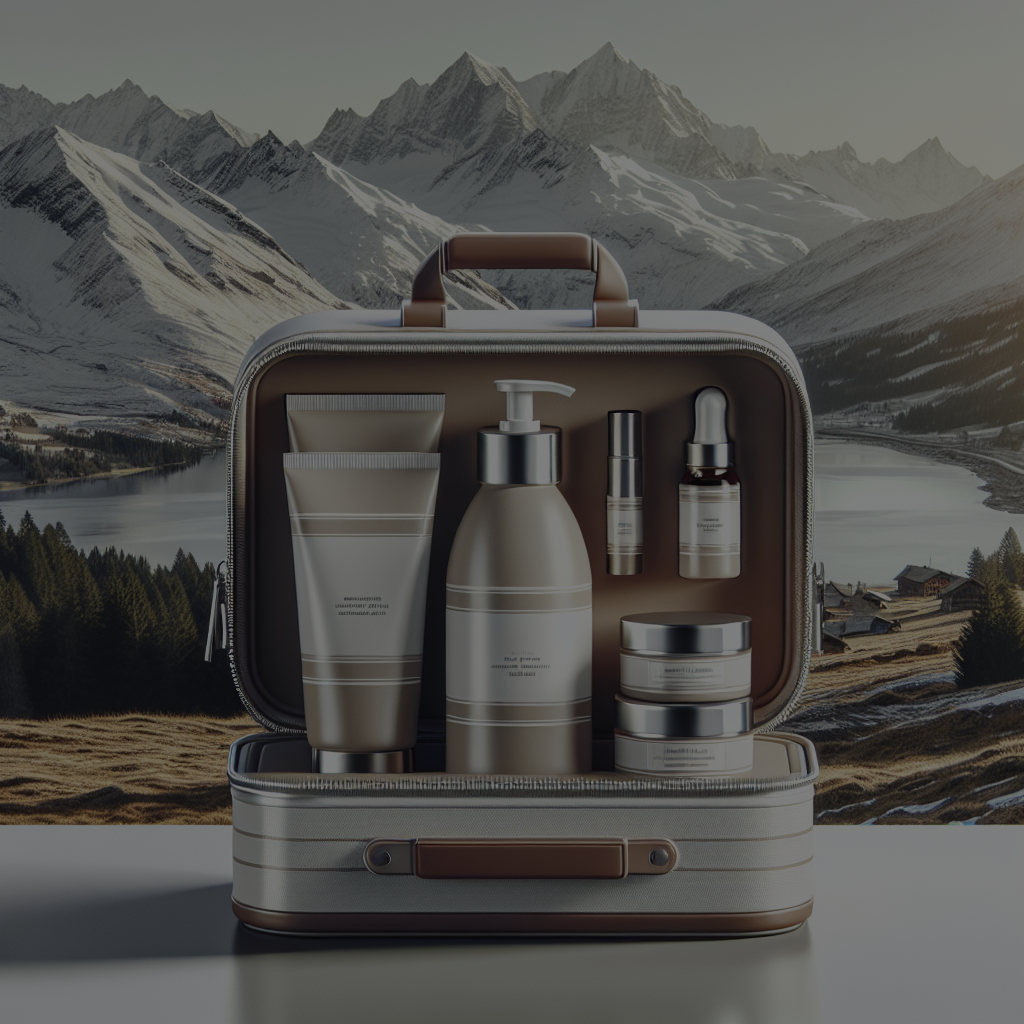
When planning a trip to the mountains, it’s essential to consider the unique skincare needs that come with high-altitude environments. The alpine climate can be harsh on the skin, with factors such as cold temperatures, strong winds, and increased UV exposure all playing a role. In this article, we will explore the must-have skincare essentials for your alpine travel kit, ensuring that your skin remains healthy and protected throughout your adventure.
Understanding the Alpine Environment
Before diving into the specific products you should pack, it’s important to understand the unique challenges that the alpine environment presents to your skin. The combination of cold temperatures, low humidity, and increased UV radiation can lead to a variety of skin issues, including dryness, chapping, and sunburn.
Cold Temperatures and Low Humidity
One of the most significant challenges in alpine environments is the cold temperature. Cold air holds less moisture than warm air, leading to lower humidity levels. This lack of moisture can cause the skin to become dry and flaky. Additionally, the cold can constrict blood vessels, reducing blood flow to the skin and making it more susceptible to damage.
Increased UV Exposure
At higher altitudes, the atmosphere is thinner, and there is less protection from the sun’s harmful UV rays. This increased exposure can lead to a higher risk of sunburn and long-term skin damage. It’s crucial to use products that offer robust sun protection to mitigate these risks.
Essential Skincare Products for Your Alpine Travel Kit
Now that we have a better understanding of the challenges posed by the alpine environment, let’s look at the essential skincare products you should include in your travel kit.
Moisturizer
A high-quality moisturizer is a must-have for any alpine travel kit. Look for a product that is rich in hydrating ingredients such as hyaluronic acid, glycerin, and ceramides. These ingredients help to lock in moisture and create a protective barrier on the skin. Opt for a thicker, cream-based moisturizer for added protection against the cold and wind.
Sunscreen
Given the increased UV exposure at higher altitudes, a broad-spectrum sunscreen with an SPF of at least 30 is essential. Choose a sunscreen that offers protection against both UVA and UVB rays. Additionally, consider a product that is water-resistant and has added antioxidants to help protect against environmental damage.
Lip Balm
The lips are particularly vulnerable to the harsh conditions of the alpine environment. A nourishing lip balm with SPF protection is crucial to prevent chapping and sunburn. Look for a product that contains hydrating ingredients such as shea butter, beeswax, and vitamin E.
Hydrating Serum
Incorporating a hydrating serum into your skincare routine can provide an extra layer of moisture. Serums containing hyaluronic acid or vitamin B5 can help to replenish the skin’s moisture levels and improve its overall texture and appearance.
Face Oil
Face oils can be particularly beneficial in cold, dry climates. They provide an additional layer of hydration and help to seal in moisture. Look for oils that are rich in essential fatty acids, such as argan oil, jojoba oil, or rosehip oil.
Gentle Cleanser
Using a gentle, hydrating cleanser is important to avoid stripping the skin of its natural oils. Opt for a cleanser that is free from harsh sulfates and contains soothing ingredients like aloe vera or chamomile.
Additional Tips for Alpine Skincare
In addition to packing the right products, there are several other tips to keep in mind to ensure your skin stays healthy in the alpine environment.
Stay Hydrated
Drinking plenty of water is essential to maintain skin hydration from the inside out. The cold, dry air can lead to dehydration, so it’s important to drink water regularly throughout the day.
Layer Your Skincare
Layering your skincare products can provide added protection against the elements. Start with a hydrating serum, followed by a moisturizer, and finish with a sunscreen. This layering technique helps to lock in moisture and create a barrier against the cold and wind.
Protect Your Hands
The hands are often exposed to the elements and can become dry and chapped. Use a rich hand cream and wear gloves to protect your hands from the cold and wind.
Reapply Sunscreen
Reapplying sunscreen throughout the day is crucial, especially if you are spending extended periods outdoors. Aim to reapply every two hours, or more frequently if you are sweating or wiping your face.
Conclusion
Traveling to alpine environments requires careful consideration of your skincare routine. By understanding the unique challenges posed by the cold, dry air and increased UV exposure, you can take steps to protect your skin. Packing the right products, such as a high-quality moisturizer, broad-spectrum sunscreen, and nourishing lip balm, is essential. Additionally, following tips such as staying hydrated, layering your skincare, and protecting your hands can help to ensure your skin remains healthy and radiant throughout your alpine adventure.

